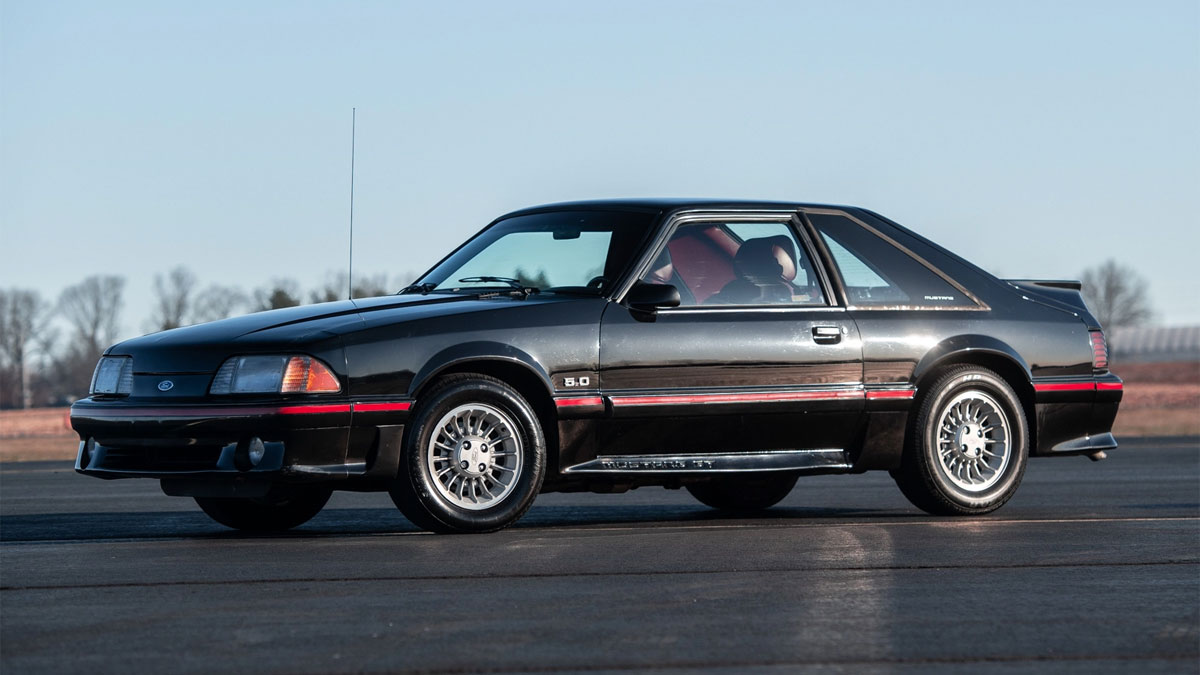Throughout the long reign of the Ford Mustang, several different platforms have underpinned this iconic pony car. Probably the least popular was the Mustang II, which shared the same platform supporting the lowly Pinto, a subcompact model.
The Pinto was a poster child for 1970s-era crappy car design, although the Chevy Monza and AMC Gremlin also offered a strong challenge.
Once Ford got their engineering priorities in place, the Fox platform took over, powering the third-generation Mustang from 1979 through the 1993 model years. Yes, things certainly began to improve for Mustang with its arrival, so let’s take a look at some interesting facts about the Fox-body style.
Launched in 1978
The Ford Fairmount and Mercury Zephyr were the first two models underpinned by the Fox platform, a rear-wheel-drive unibody chassis. Both of these five-passenger cars were introduced for the 1978 model year and were available in two- and four-door configurations as well as a wagon.
For 1979, the Ford Mustang and Mercury Capri were rolled out as twin models. In the Mustang’s earlier years, the Cougar was the Mercury version of the Mustang while the original Capri was a captive import from Germany.
After the 1986 model year, the Ford Motor Company dropped the Capri, allowing the Mustang to resume its position as the automaker’s lone pony car.

Ford took full advantage of the Fox body, by rolling out more upscale models, including the Ford Granada and later the LTD. Lincoln got the Continental while the Ford Thunderbird, Mercury Cougar, and eventually the Lincoln Mark VII each was underpinned by a modified version of that platform.
The Ford Ranchero was the lone car-truck model built on the Fox platform, a poor-selling alternative to the El Camino and available only in the 1981 and 1982 model years before it was discontinued.
In all, the Fox platform spanned 15 model years and involved 11 nameplates, but as you might guess the Ford Mustang was the best selling and longest lasting Fox-body model in the group.
See Also – Top Down Steed: 2016 Ford Mustang GT Premium Convertible
A Variety of Engine Choices
As for the Mustangs of that era, these models continued with the 2+2 seating configuration that has always defined pony cars. Available in two-door coupe, three-door hatchback, and convertible body styles (the latter was introduced in 1983), the Mustang line featured a wide range of engine choices spanning I4, I6, V6, and V8 arrangements.
The smaller I4 was from, you guessed it, the Ford Pinto and was offered to give the Mustang a fuel-efficient model. Indeed, 1979 was the year of the second Arab oil embargo of the 1970s with the auto industry attempting to respond with more fuel-efficient models.
Unfortunately, that move came at the expense of power as 88 horses meant that the base steed was severely underpowered.
But at least Ford didn’t abandon power completely, as it offered a turbocharged version of its inline-four-cylinder engine, which increased horsepower by 60 percent or buyers could choose a 2.8-liter V6, a 3.3-liter inline-six, or even the 5.0-liter V8.
That latter engine disappeared for a few years in 1980 in favor of a 4.2L V8, but eventually returned and included a high-output option in 1985.
By the mid-1980s, Ford and other automakers began to figure out how to make engines work more efficiently, by introducing fuel injection and pairing those engines with more modern transmissions.
Succeeded by a Modified Fox Platform
By the time the early 1990s rolled around, Ford’s Fox-body platform had run its course which meant that something new, or in the Mustang’s case, something heavily modified needed to be offered.
Yes, the fourth-generation Mustang introduced in 1994 was all-new, but underpinning that steed was a fresh Fox-derived platform–code-named SN-95—used by Ford for yet another 11 years.
See Also – Hockey Stick Graphics Package Delivers Boss 302 Eye Candy
- 2024 Mazda CX-50: A Compact SUV with Premium Aspirations - Apr 15, 2024
- 2024 Ford Mustang (Iconic Pony Car Evolves) - Apr 4, 2024
- 2024 Ford Maverick (Looks Like a Truck, Drives Like a Car) - Mar 28, 2024

